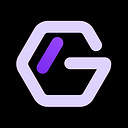Graphlinq Protocol Enables Building Blockchain Developer Tools Without Writing Any Line Of Code
Developing smart contracts, bots, basic scripted logics, arbitrages on DEXs, or trading on CEXs have been becoming easier with time to deploy. There are platforms out there that let users deploy their own smart contracts or set up trading bots without having to code at all.
However, most of these platforms are focused on specific automation and charge a fee from their users which then ultimately is the user-end fee and not a fee that the user would have paid if he was a developer.
This is when Graphlinq steps in, launched earlier this year, the motive is to provide a way to interface the blockchain with any connected system as effortlessly as possible and without requiring any coding skills with a unique execution fee method.
In other words, we want to give our users “a developer experience, without needing them to code”. Meaning that the users can be existing coders, organizations, or just blockchain enthusiasts, anyone can build on top of Graphlinq.
Graphlinq even lets you connect to Ethereum/BSC data-feed almost for free and in real-time using GraphLinq to help you suit your Trading, DeFi & similar needs. The platform has live drag-and-drop plugins & a set of templates to choose from. Whether a user wants to fetch data from a decentralized or centralized stream and send it to telegram, webhook, discord, etc., or if he wants to set up a trading bot based on his indicators, anything and everything can be automated with the help of Graphlinq Protocol.
What’s different about building with Graphlinq is that when you execute a graph (.glq file), you are charged an execution fee of the node, referred to as GAS.
Graphlinq goes one step further, as each time users pay for graphs’ executions, the GAS (GLQ) used for any of the graphs running on the mainnet will be burned from the circulation, therefore reducing the supply of the asset over time.

However GraphLinq is built on top of the Ethereum network as of now, but by the end of this year, we will roll out our own Proof Of Stake Blockchain.
Apart from this, in our roadmap, we have mentioned implementing Dao Governance later this year which will allow the community to decide the future of project development by voting on the best things to build.
By Q3 this year, we would launch a community-driven marketplace for buying & selling premade Graph templates peer to peer using GLQ. There are more interesting plans for the future in the Graphlinq roadmap, check it out.
GraphLinq is also going to enable staking for GLQ token using a smart contract, wherein the early adaptors & stakers will benefit from appealing APY bonuses, so make sure you have joined all our social media to remain updated:
Telegram: https://t.me/graphlinq
Instagram: https://www.instagram.com/graphlinq/
Linkedin: https://www.linkedin.com/company/graphlinq-protocol
Twitter: https://twitter.com/graphlinq_proto
Youtube: https://www.youtube.com/channel/UCV2RJ7hYJwBSGuEsnDU5Wog
You can get started on building your first graph today, here’s complete documentation on how it works: https://docs.graphlinq.io/
Our founders introducing GraphLinq in their first AMA session: https://youtu.be/vnm9b43tb-c
